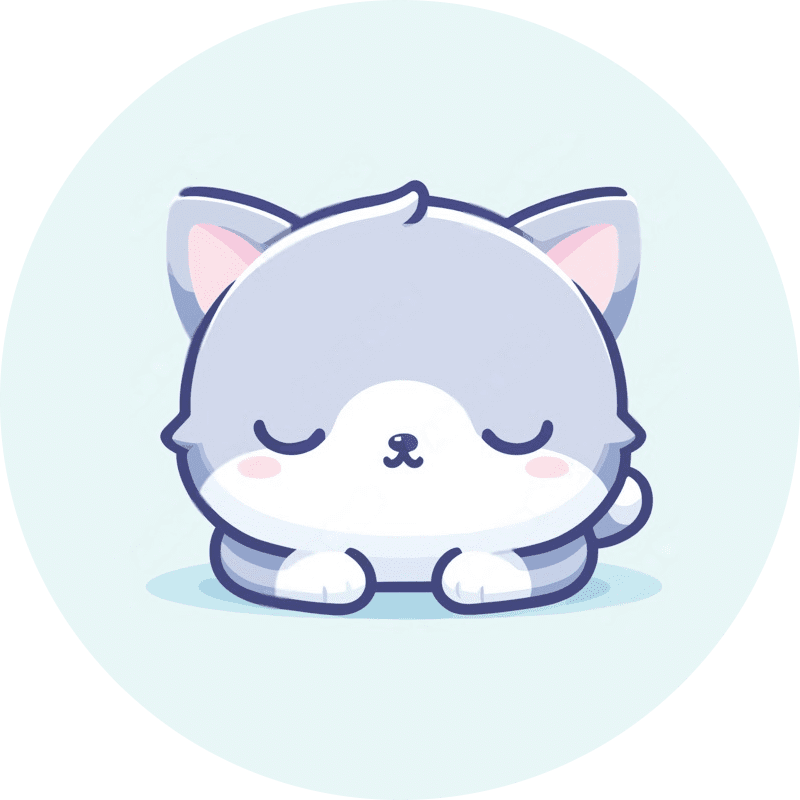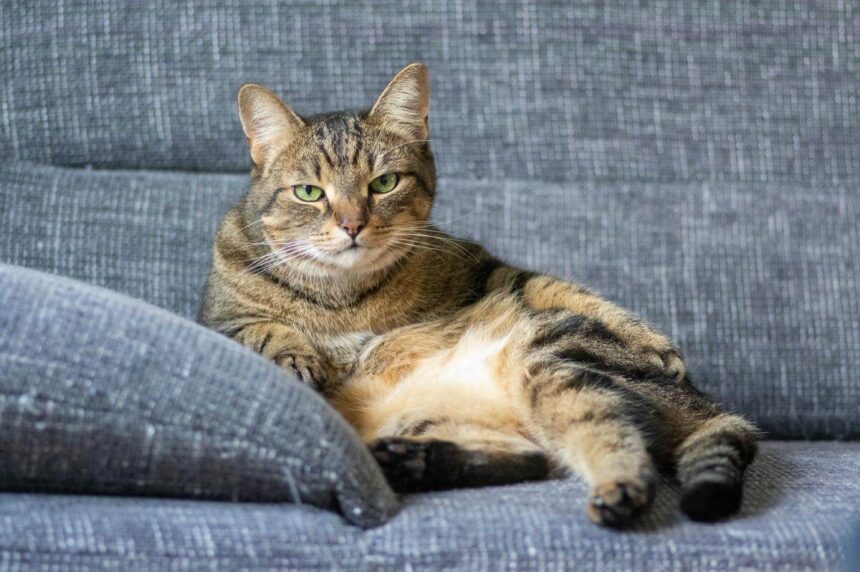As a responsible and caring cat owner, it is essential to monitor your feline companion’s health and well-being. One crucial aspect of your cat’s overall health is maintaining an ideal weight. Just like humans, cats can suffer from obesity, which can lead to various health complications. In this comprehensive guide, we will explore the signs and risks of feline obesity and provide you with practical tips on how to determine if your cat is overweight. By understanding these indicators, you can take proactive measures to ensure your cat stays healthy, happy, and fit.
Understanding Feline Obesity
Obesity in cats occurs when they consume more calories than they burn, resulting in an accumulation of excess body fat. Several factors contribute to obesity, including genetics, overfeeding, lack of exercise, and underlying health issues. It is important to note that obesity can lead to severe health problems in cats, such as diabetes, arthritis, heart disease, and a shortened lifespan.
Recognizing the Signs of Feline Obesity
Identifying whether your cat is overweight requires observation and regular assessments. The following signs can help you determine if your feline companion is carrying excess weight:
Visible Weight Gain
The most obvious sign of obesity is a noticeable increase in body weight. You should be able to feel your cat’s ribs without applying excessive pressure, and there should be a slight waistline visible when viewed from above.
Difficulty in Grooming
Obese cats may struggle to groom themselves effectively, leading to a scruffy or unkempt appearance. Areas of matted or oily fur, particularly around the hind end, may indicate difficulty in reaching and cleaning those areas.
Inability to Feel the Ribs
Gently run your fingers along your cat’s ribcage. If you cannot feel the ribs easily, it may indicate an excess layer of fat.
Waddling or Unsteady Gait
Overweight cats may exhibit a waddling gait due to the additional weight they carry. They may also display signs of reduced agility, struggling to jump or climb as effortlessly as before.
Labored Breathing
Excess weight can put strain on your cat’s respiratory system, resulting in heavy or labored breathing. Listen for wheezing or panting during normal activities.
Lethargy and Reduced Activity
Obesity can lead to decreased energy levels in cats. If your once-active feline now spends most of its time sleeping or seems disinterested in play, it could be a sign of excess weight.
To get a more accurate understanding of your cat’s weight, it is beneficial to assess their body condition. A visual and tactile examination can provide insights into your cat’s overall health. Use the following techniques to evaluate your cat’s body condition:
Assessing Your Cat’s Body Condition
Visual Examination
Observe your cat from different angles. A healthy weight cat should have a well-defined waistline when viewed from above, and their abdomen should tuck upward towards their pelvis. From the side, the cat’s belly should not sag, and there should be a noticeable upward slope from the chest to the abdomen.
Palpation
Gently run your hands over your cat’s body. You should be able to feel the ribs without excessive pressure, and there should be a thin layer of fat covering them. If you cannot feel the ribs or have difficulty locating them, your cat may be overweight.
Body Condition Scoring
Veterinarians often use a body condition scoring system to assess a cat’s weight. This system typically ranges from 1 to 9, with 1 being emaciated and 9 indicating severe obesity.
By familiarizing yourself with this scoring system, you can gauge your cat’s weight more accurately. The scale generally follows these guidelines:
1-3: Underweight – Ribs, spine, and pelvic bones are highly visible, with minimal fat covering. A lack of muscle mass may also be apparent.
4-5: Ideal Weight – Ribs can be felt easily but are not prominent. A slight layer of fat covers them, and the waistline is visible from above.
6-7: Overweight – Ribs are difficult to feel without applying pressure, and there is a noticeable layer of fat over the spine and base of the tail. The waistline may be less defined.
8-9: Obese – Ribs are almost impossible to feel due to excessive fat deposits. The abdomen sags, and the waistline is absent. Fat pads may be present on the chest and hindquarters.
Remember, if you have concerns about your cat’s weight, it is always best to consult with a veterinarian. They can provide a professional assessment and offer guidance tailored to your cat’s specific needs.
Preventing and Managing Feline Obesity
Prevention is always better than treatment when it comes to feline obesity. Here are some effective strategies to help keep your cat at a healthy weight:
Balanced Diet
Feed your cat a well-balanced diet consisting of high-quality cat food appropriate for their life stage. Avoid excessive treats and human food scraps, as they can contribute to weight gain.
Portion Control
Follow the feeding guidelines provided by the cat food manufacturer and measure your cat’s food to ensure they receive appropriate portion sizes. Avoid free-feeding and establish a feeding schedule to regulate calorie intake.
Environmental Enrichment
Provide opportunities for exercise and mental stimulation. Engage your cat in interactive play sessions using toys or puzzles that encourage physical activity and mental engagement.
Regular Exercise
Allocate time for daily play sessions with your cat, incorporating activities that encourage movement and exercise. This can include chasing toys, using a laser pointer, or engaging in interactive play with feathers or strings.
Vertical Space
Install cat trees, shelves, or perches that allow your cat to climb and explore vertically. This helps promote physical activity and exercise.
Weight Management Plans
If your cat is already overweight or obese, consult with your veterinarian to create a tailored weight management plan. This may involve a combination of dietary adjustments, portion control, and an exercise regimen.
Choosing the right cat food for weight management
Choosing the right cat food for weight management is a crucial aspect of helping your overweight cat achieve a healthy weight. The right diet can provide balanced nutrition while controlling calorie intake. Here are some considerations to keep in mind when selecting cat food for weight management:
Consult with Your Veterinarian
Before making any changes to your cat’s diet, it is essential to consult with your veterinarian. They can assess your cat’s specific needs and provide recommendations tailored to their age, breed, health condition, and activity level.
Look for a “Weight Management” Formula
Many reputable pet food brands offer specialized formulas designed specifically for weight management in cats. These formulas are typically lower in calories and fat while still providing essential nutrients. Look for labels that mention “weight management,” “light,” or “reduced calorie.”
Check the Ingredients List
Opt for cat food that lists high-quality protein sources as the primary ingredients. Protein is essential for maintaining muscle mass while promoting satiety. Look for real meat sources such as chicken, turkey, or fish. Avoid products that contain excessive fillers, by-products, or artificial additives.
Consider the Calorie Content
Weight management cat foods often display the calorie content per serving on the packaging. Compare different brands and formulas to find an option that provides an appropriate calorie level for your cat’s weight loss goals. Your veterinarian can help determine the appropriate daily caloric intake for your cat.
Focus on Fiber
Fiber plays a crucial role in weight management by promoting satiety and aiding in digestion. Look for cat foods that contain moderate to high levels of fiber, such as whole grains, vegetables, or fruits. These ingredients can help your cat feel full while reducing calorie intake.
Avoid Free-Feeding
Free-feeding, where food is left out all day for your cat to eat as they please, can contribute to overeating and weight gain. Instead, follow a scheduled feeding routine with measured portions. Dividing the recommended daily food intake into multiple small meals can help prevent hunger and promote metabolism.
Monitor and Adjust
Regularly monitor your cat’s weight and body condition score as you transition to a weight management diet. If your cat is not losing weight as expected or if they continue to gain weight, consult with your veterinarian for adjustments to their feeding plan.
Be Patient
Weight loss in cats should be gradual to avoid complications. Aim for a slow and steady weight loss of about 1-2% of their body weight per week. Rapid weight loss can lead to health problems, such as hepatic lipidosis (fatty liver disease).
Remember, successful weight management goes beyond choosing the right cat food. It also involves portion control, monitoring treats, and providing opportunities for exercise and mental stimulation. Regular veterinary check-ups and ongoing communication with your veterinarian will help ensure your cat’s weight management plan is on the right track.
Conclusion
Maintaining an ideal weight is crucial for the overall health and well-being of your cat. By understanding the signs and risks of feline obesity, as well as implementing preventive measures and regular assessments, you can take proactive steps to keep your feline companion at a healthy weight. Remember to consult with your veterinarian for personalized advice and support. With your dedication and care, your cat can enjoy a long and happy life free from the burdens of obesity.



